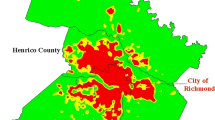Abstract
The intricate interplay among urban sub-systems poses significant challenges in comprehensively interpreting urban dynamics and assessing the efficacy of urban planning strategies. Spatial modelling stands out as a crucial tool for analysis and decision-making in this context. This paper investigates the potential of Space Syntax in extracting intrinsic characteristics vital for understanding urban growth dynamics and spatial phenomena. Specifically, the study explores the inherently multiscale nature of Space Syntax, which offers a diverse array of techniques and measures for analysing urban systems, spanning from regional to architectural scales. In particular, the investigation focuses on the capability of Space Syntax to estimate vehicular and pedestrian flows and their correlation with the distribution of commercial activities, both at urban and neighbourhood scales, with a specific emphasis on the case study of Pisa, Italy, leveraging Angular Segment Analysis. In addition to the analytical exploration, the paper provides a concise historical overview, highlighting the transformations and peculiarities of Pisa’s current urban form. The findings underscore the potential of the proposed methodology and Space Syntax multiscale approach for analysing urban settlements. Notably, the research reveals a correlation between heavily traversed streets and the localisation of commercial activities. These insights contribute to a deeper understanding of urban dynamics and offer valuable implications for urban planning and design.
Access this chapter
Tax calculation will be finalised at checkout
Purchases are for personal use only
Similar content being viewed by others
References
Crooks, A., Malleson, N., Malleson, N., Manley, E., Heppenstall, A.: Agent-based modelling and geographical information systems: a practical primer. Sage (2018)
Wan, L., Nochta, T., Tang, J., Schooling, J.: Digital Twins for Smart Cities: Conceptualisation, challenges and practices. ICE Publishing (2023)
Mara, F., Cutini, V.: Space syntax vs agent-based modelling in the maze of urban complexity: a critical comparison between top-down and bottom-up approaches and applications. In: Marucci, A., Zullo, F., Fiorini, L., Saganeiti, L. (eds.) Innovation in Urban and Regional Planning. INPUT 2023. Lecture Notes in Civil Engineering, vol. 467. Springer, Cham (2024). https://doi.org/10.1007/978-3-031-54118-6_52
Yamu, C., Van Nes, A., Garau, C.: Bill Hillier’s legacy: space syntax—a synopsis of basic concepts, measures, and empirical application. Sustainability 13(6), 3394 (2021)
Van Nes, A., Yamu, C.: Introduction to Space Syntax in Urban Studies. Springer Nature (2021).https://doi.org/10.1007/978-3-030-59140-3
Cutini, V.: La rivincita dello spazio urbano. L’approccio Configurazionale Allo Studio e All’analisi Dei Centri Abitati (2010)
Cutini, V.: La forma del disordine: Tecniche di analisi e progetto urbano ai tempi dello sprawl, pp. 1–226. Mimesis Edizioni (2016)
Hillier, B., Penn, A., Hanson, J., Grajewski, T., Xu, J.: Natural movement: or, configuration and attraction in urban pedestrian movement. Environ. Plann. B. Plann. Des. 20(1), 29–66 (1993)
Turner, A.: From axial to road-centre lines: a new representation for space syntax and a new model of route choice for transport network analysis. Environ. Plann. B. Plann. Des. 34(3), 539–555 (2007)
Hillier, B., Iida, S.: Network and Psychological Effects in Urban Movement. In: Cohn, A.G., Mark, D.M. (eds.) Spatial Information Theory, pp. 475–490. Springer Berlin Heidelberg, Berlin, Heidelberg (2005). https://doi.org/10.1007/11556114_30
OSM. OpenStreetMap. https://www.openstreetmap.org/#map=6/54.910/-3.432. (2024)
Regione Toscana.: Direzione Urbanistica e Politiche Abitative - Sistema Informativo Territoriale e Ambientale – SITA: Grafo stradario e ferroviario della Regione Toscana (2019)
QGIS, Firenze version 3.28 LTR, http://www.qgis.org/en/site/index.html.(2022)
Snyder, H.: Literature review as a research methodology: an overview and guidelines. J. Bus. Res. 104, 333–339 (2019)
Pezzica, C., Altafini, D., Mara, F., Chioni, C.: Travel-time in a grid: modelling movement dynamics in the “minute City”. In: Marucci, A., Zullo, F., Fiorini, L., Saganeiti, L. (eds.) Innovation in Urban and Regional Planning. INPUT 2023. Lecture Notes in Civil Engineering, vol. 467. Springer, Cham (2024). https://doi.org/10.1007/978-3-031-54118-6_58
Tolaini, E.: Forma Pisarum. Storia urbanistica della città di Pisa – problemi e ricerche. Nistri-Lischi Editori (2013)
Masetti, A.R.: Pisa. Storia Urbana. Piante e vedute dalle origini al secolo XX. La Giuntina, Firenze (1964)
Frattarelli Fischer, L., Nucara Dani, C.: Il quartiere di San Francesco. Progetti e interventi ottocenteschi su una zona medievale di Pisa. Tacchi Editore, Pisa (1989)
Lynch, K.: The Image of the City. MIT press (1964)
Hillier, B.: Space is the Machine. Cambridge University Press, Cambridge (1996)
Vallerini, A.: Nuova Guida di Pisa. Terza Edizione. Editore Pisa (1932)
Author information
Authors and Affiliations
Corresponding author
Editor information
Editors and Affiliations
Rights and permissions
Copyright information
© 2024 The Author(s), under exclusive license to Springer Nature Switzerland AG
About this paper
Cite this paper
Mara, F., Anselmi, C., Deri, F., Cutini, V. (2024). The Spatial Roots of Urban Growth: Modelling Urban Dynamics with Space Syntax. In: Gervasi, O., Murgante, B., Garau, C., Taniar, D., C. Rocha, A.M.A., Faginas Lago, M.N. (eds) Computational Science and Its Applications – ICCSA 2024 Workshops. ICCSA 2024. Lecture Notes in Computer Science, vol 14817. Springer, Cham. https://doi.org/10.1007/978-3-031-65238-7_5
Download citation
DOI: https://doi.org/10.1007/978-3-031-65238-7_5
Published:
Publisher Name: Springer, Cham
Print ISBN: 978-3-031-65237-0
Online ISBN: 978-3-031-65238-7
eBook Packages: Computer ScienceComputer Science (R0)




